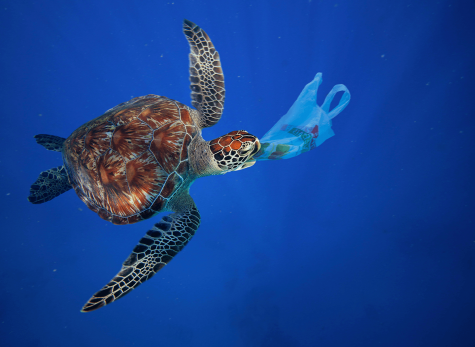A Corny & Fun(gi) Way to Solve Plastic Pollution!
March 13, 2019

The Issue:
- Plastic filling landfills
- Garbage patch in the Pacific Ocean
- Threat to marine life
- Takes hundreds of years to decompose
- Plastic toxins in the fish that we consume
The Solution:
We believe that a fungus, known scientifically as Aspergillus Tubingensis, is the key to removing the existing plastic waste from the surface of our planet.
In order to prevent further plastic pollution, we propose that all producers of plastic switch over to what are known as bioplastics.
More about Aspergillus Tubingensis:

Soil Fungus
Thrives off of consuming plastic
Withstands UV Rays
Can survive in elevated temperatures
Able to live in low PH levels
Costs $310/unit
Able to breed
Consumes plastic in just a few weeks

More about Bioplastics:
- Biodegradable
- 3-6 months to decompose fully
- Edible
- Made of all natural products, including corn starch
- Quick production process
- Inexpensive
- Does not require fossil fuels
Raising Funds:
Funding a project of this magnitude could certainly present some issues. In order to lessen the burden of the cost, we will hold several fundraisers and partner with organizations like Greenpeace who fight for the environment. Other funding would come from the government.

What YOU Could Do:
- Donate to eco-friendly organizations
- Volunteer in beach clean-up efforts
- Spread the word
- Create recycle bins at school
- Attend campus beautification
Good & Bad Consequences:
- If caught littering around campus, students will receive detentions
- Cleaner and healthier environment
- Visually pleasing campus
- Influence the rest of the community
Why This Will Work:
- Relatively inexpensive compared to other proposed solutions
- Natural way to clean up the environment
- More time efficient
- Offers a solution to the existing issue
- Prevents the issue from growing
Incentives:
- Open more recycling centers where individuals can earn money for recycled products
- Offer tax incentives to companies who switch to bioplastics
- Volunteer hours for students who participate and a cord at graduation
